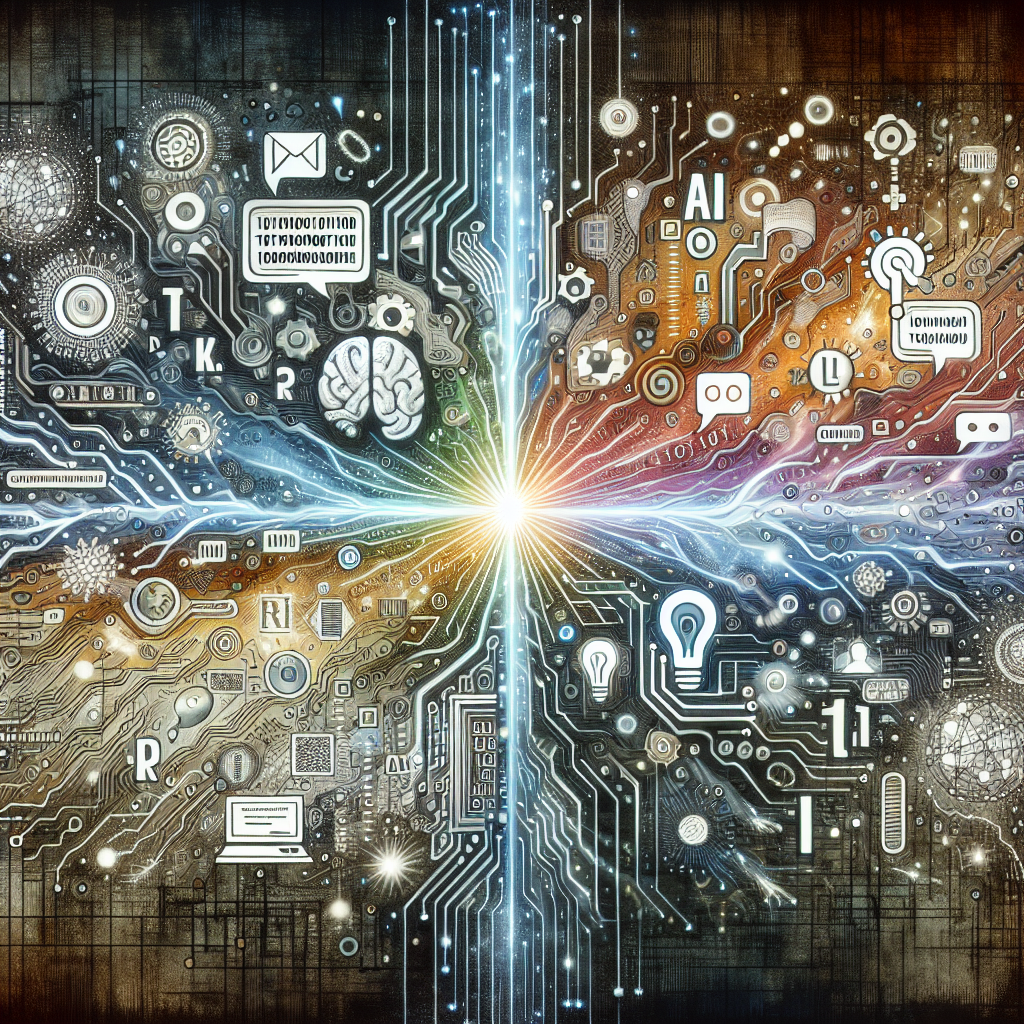In today’s digital age, Artificial Intelligence (AI) is rapidly reshaping the way we communicate and interact with technology. One of the most significant advancements in AI technology is Natural Language Processing (NLP), which enables machines to understand and interpret human language. This revolutionary technology is unleashing new possibilities for businesses, organizations, and individuals alike. In this article, we will explore how NLP is transforming communication and the impact it is having on various industries.
What is Natural Language Processing?
Natural Language Processing is a branch of artificial intelligence that focuses on the interaction between computers and human language. It is a field that combines computer science, linguistics, and cognitive psychology to create systems that can understand, interpret, and generate human language. NLP enables machines to analyze and manipulate large volumes of natural language data, such as text and speech, allowing them to extract meaning, sentiment, and context from human language.
How does NLP work?
NLP uses a combination of algorithms, statistical models, and machine learning techniques to analyze and process natural language data. The process starts with the collection of a large amount of text or speech data, which is then pre-processed to clean and normalize the data. Next, the data is tokenized, segmented, and tagged to identify individual words, phrases, and parts of speech.
Once the data is pre-processed, NLP algorithms are used to extract meaningful information from the text, such as named entities, sentiments, and relationships between words. These algorithms are trained on large datasets to improve their accuracy and performance over time. Finally, the processed data is used to generate responses, analyze sentiment, categorize information, and perform other natural language tasks.
Applications of NLP
NLP has a wide range of applications across various industries, including healthcare, finance, marketing, customer service, and education. Some of the most common applications of NLP include:
1. Sentiment analysis: NLP is used to analyze and categorize the sentiment of text data, such as customer reviews, social media posts, and news articles. This information can be used by businesses to understand customer opinions, detect trends, and improve their products and services.
2. Machine translation: NLP is used to translate text from one language to another, enabling people to communicate across language barriers. Machine translation systems, such as Google Translate, use NLP algorithms to analyze and generate accurate translations of text.
3. Chatbots: NLP is used to power chatbots and virtual assistants that can interact with users in natural language. These systems can provide customer support, answer questions, and perform tasks on behalf of users, improving the efficiency and accessibility of services.
4. Speech recognition: NLP is used to transcribe and analyze speech data, enabling systems to understand and interpret spoken language. Voice assistants, such as Siri and Alexa, use NLP algorithms to process and respond to voice commands from users.
5. Information extraction: NLP is used to extract useful information from unstructured text data, such as news articles, research papers, and social media posts. This information can be used to generate insights, identify trends, and make data-driven decisions.
Impact of NLP on Communication
NLP is revolutionizing communication by enabling machines to process and understand human language, opening up new possibilities for interaction and collaboration. The impact of NLP on communication can be seen in various ways:
1. Improved customer service: NLP-powered chatbots and virtual assistants are transforming customer service by providing instant and personalized support to users. These systems can handle a wide range of queries, freeing up human agents to focus on more complex issues.
2. Enhanced user experience: NLP is improving the user experience by making technology more intuitive and user-friendly. Voice assistants, smart speakers, and other NLP-powered devices enable users to interact with technology in a natural and conversational way.
3. Increased productivity: NLP is helping businesses and organizations automate repetitive tasks, such as data entry, document processing, and information retrieval. By leveraging NLP technology, organizations can streamline their operations and increase efficiency.
4. Language diversity: NLP is breaking down language barriers by enabling machines to understand and process multiple languages. Machine translation systems and multilingual chatbots are helping people communicate across different languages and cultures.
5. Data insights: NLP is enabling organizations to extract valuable insights from large volumes of text data, such as social media posts, customer feedback, and news articles. By analyzing this data, businesses can gain a deeper understanding of their customers, competitors, and market trends.
FAQs
Q: What are the main challenges of NLP?
A: Some of the main challenges of NLP include ambiguity in language, understanding context, handling slang and informal language, and processing noisy or unstructured text data.
Q: How can businesses leverage NLP technology?
A: Businesses can leverage NLP technology to automate repetitive tasks, improve customer service, analyze sentiment, extract insights from text data, and enhance user experience.
Q: What are the ethical implications of NLP?
A: There are ethical implications of NLP, such as privacy concerns, bias in algorithms, and misuse of personal data. Organizations must ensure that NLP technology is used responsibly and ethically.
Q: What is the future of NLP?
A: The future of NLP is bright, with advancements in machine learning, neural networks, and deep learning driving innovation in the field. NLP is expected to continue to revolutionize communication and unlock new opportunities for businesses and society.
In conclusion, Natural Language Processing is transforming communication and revolutionizing the way we interact with technology. By enabling machines to understand and interpret human language, NLP is opening up new possibilities for businesses, organizations, and individuals. From improving customer service to enhancing user experience, the impact of NLP on communication is profound and far-reaching. As NLP technology continues to evolve and advance, we can expect to see even greater innovations in the field of artificial intelligence and communication.
